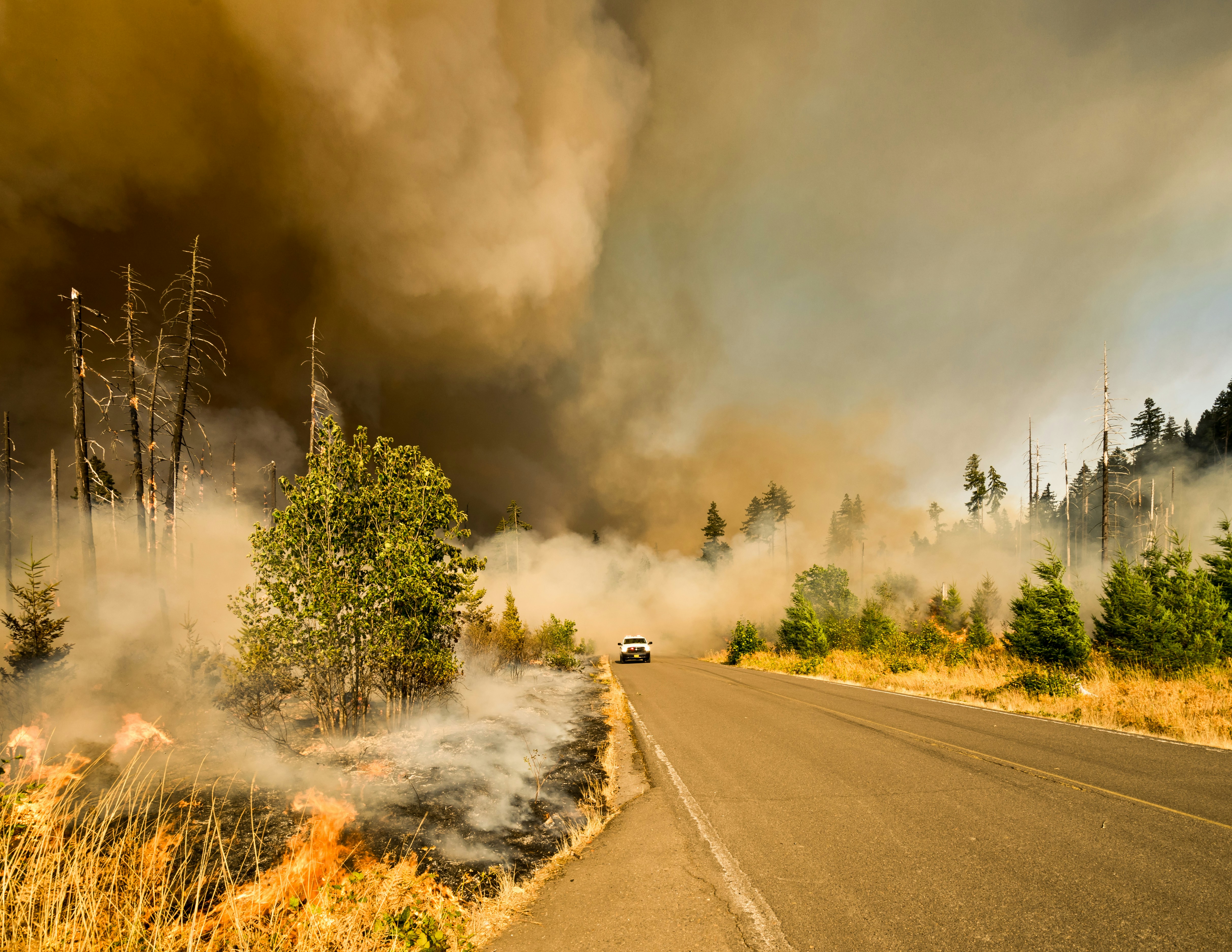Wildfires have become a recurring nightmare for many parts of the United States, particularly in the western regions. These fires not only devastate landscapes and communities but also have far-reaching impacts on air quality, which can affect millions of people far from the flames. As climate change continues to create drier and hotter conditions, the frequency and intensity of wildfires are expected to increase, posing an even greater threat to public health and the environment.
The Impact of Wildfires on Air Quality
Wildfires release a cocktail of pollutants into the atmosphere, including particulate matter (PM2.5), carbon monoxide, nitrogen oxides, and volatile organic compounds. These pollutants can travel hundreds or even thousands of miles, affecting air quality far from the source of the fire. Recent wildfires have caused pollution that has halted or, in some places, completely reversed decades of progress made in improving air quality across a large portion of the United places. This statement underscores the severity of the issue, highlighting how wildfire smoke is undoing years of progress made through environmental regulations like the Clean Air Act.
The Air Quality Index (AQI) is a useful tool for understanding the impact of these pollutants. The AQI ranges from 0 to 500, with higher numbers indicating worse air quality. When the AQI exceeds 100, air quality is considered unhealthy, particularly for sensitive groups such as children, the elderly, and those with pre-existing respiratory conditions. During wildfire events, AQI levels can skyrocket, reaching hazardous levels that pose significant health risks to the general population.
Health Impacts of Wildfire Smoke
The health impacts of wildfire smoke are both immediate and long-term. Short-term exposure can cause eye irritation, coughing, wheezing, and difficulty breathing. For individuals with asthma or other respiratory conditions, the effects can be even more severe. Long-term exposure to wildfire smoke has been linked to chronic respiratory diseases, cardiovascular diseases, and even premature death. A study published in the journal Nature found that "wildfire smoke has added enough pollution to the air to wipe out nearly half of the total air quality gains made from 2000 onward" in states like California, Washington, and Oregon.
One of the most concerning components of wildfire smoke is fine particulate matter, or PM2.5. These tiny particles can penetrate deep into the lungs and even enter the bloodstream, causing inflammation and exacerbating conditions like asthma and heart disease. According to the Harvard Health Blog, "The small particles in wildfire smoke are the most worrisome to our health. When we breathe them in, these particles can travel deep into the lungs and sometimes into the bloodstream".
Case Studies: California and Beyond
California has been one of the hardest-hit states when it comes to wildfires and their impact on air quality. The 2020 fire season was particularly devastating, with more than 106 large wildfires burning over 6.7 million acres in California and Oregon. The smoke from these fires affected air quality not just locally but across the entire country. "When land burns in that quantity, wildfires have an impact on air quality all over the country," notes Lighthouse Worldwide Solutions.
The situation in California during the 2020 fire season serves as a stark example of the broader trend. A study published in Fire Ecology found that during the 2020 wildfires, direct PM2.5 emissions surged up to 38 times compared to an average day. The study also indicated that wildfires alone led to a rise in ozone daily maximum 8-hour average by up to 10 parts per billion (ppb) and exceeded PM2.5 air quality standards in numerous locations by up to 10 times.
Mitigation and Adaptation Strategies
Given the increasing frequency and severity of wildfires, it is crucial to adopt both mitigation and adaptation strategies to protect public health and improve air quality. One approach is to enhance forest management practices, including controlled burns and thinning of dense forests, to reduce the risk of catastrophic wildfires. While these measures can generate local smoke plumes, they are essential for preventing larger, more destructive fires.
On an individual level, people can take several steps to protect themselves from wildfire smoke. These include staying indoors during high-smoke days, using air purifiers, and wearing N95 masks when going outside. The Harvard Health Blog recommends creating a "clean room" in your home with an air purifier and keeping windows and doors closed to minimize indoor pollution.
Wildfires are a growing threat to air quality and public health in the United States. As climate change continues to drive more frequent and severe fires, it is essential to adopt comprehensive strategies to mitigate their impact. By improving forest management practices and taking individual precautions, we can protect ourselves and our communities from the harmful effects of wildfire smoke.















